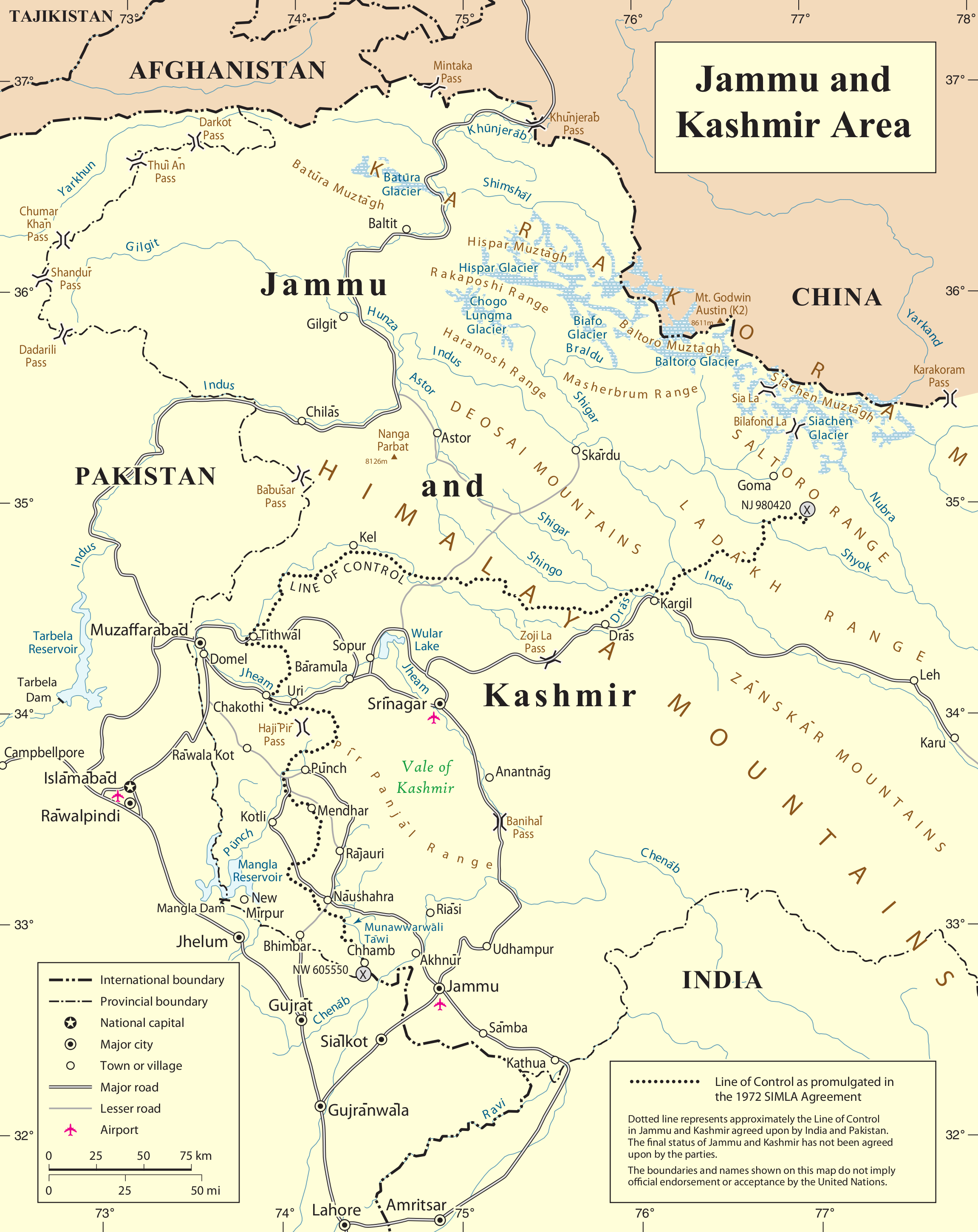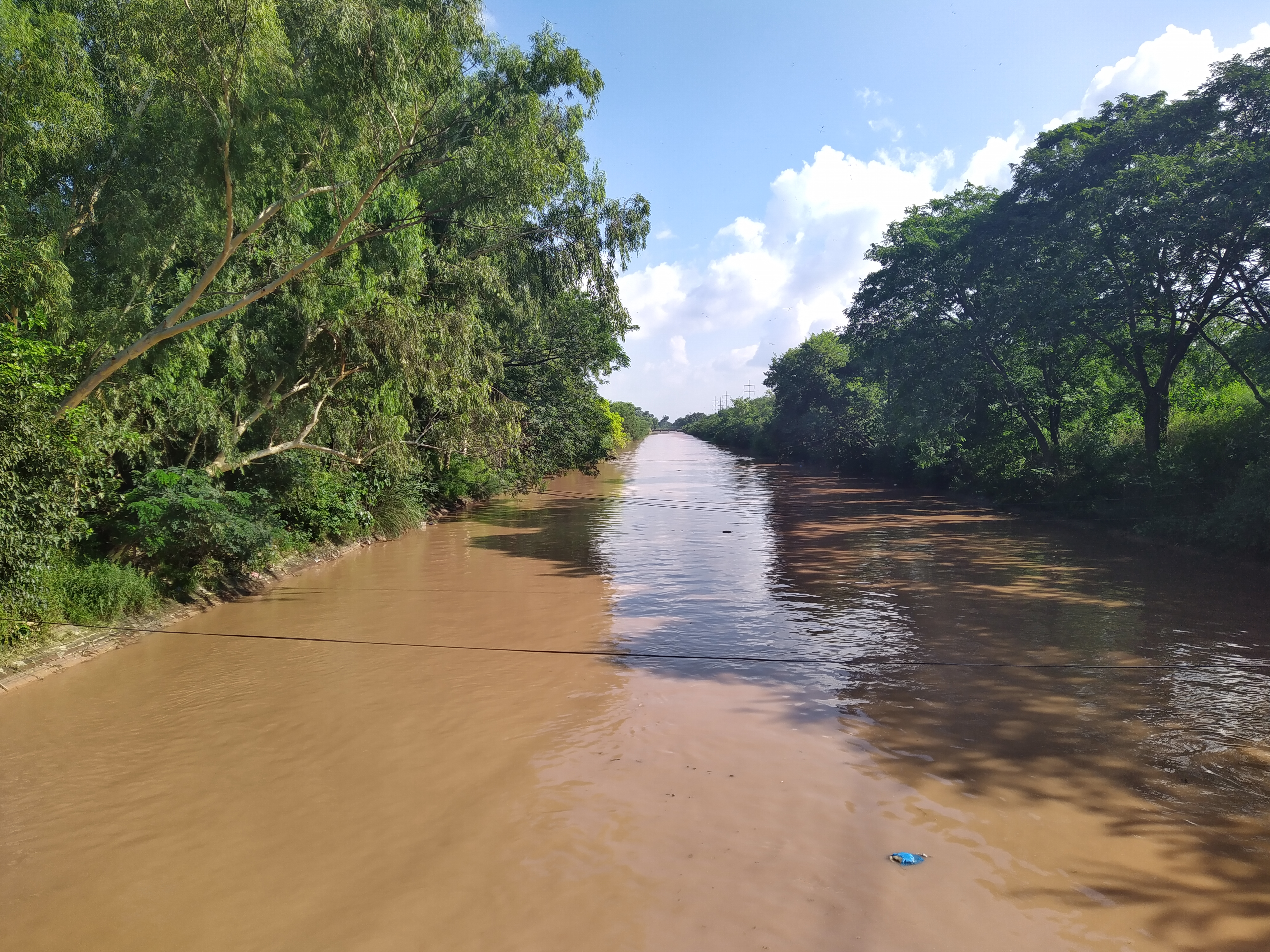|
60 Medium Regiment (India)
60 Medium Regiment is part of the Regiment of Artillery of the Indian Army. Formation The regiment traces its history from 1823, when the Jammu and Kashmir Bodyguard Cavalry was raised by Maharaja Gulab Singh, the founder of Dogra dynasty and the first Maharaja of the princely state of Jammu and Kashmir. It was composed of Hindu Dogra troops. As part of the Imperial Service Troops, the unit fought in World War I. The regiment gave a brilliant account of itself in the Palestine campaign and in recognition of its achievements, it was awarded the battle honours ''Megiddo'', ''Sharon'' and ''Palestine''. The regiment as part of Jammu and Kashmir State Forces saw action during the Indo-Pakistani war of 1947–1948. The regiment was disbanded in 1956 and all the personnel, except officers were absorbed into the newly raised artillery regiment on 1 January 1957. This unit was designated as 60 Heavy Regiment. At raising, the unit was equipped with Mark 6 BL 7.2-inch Howitzers. The fi ... [...More Info...] [...Related Items...] OR: [Wikipedia] [Google] [Baidu] |
India
India, officially the Republic of India, is a country in South Asia. It is the List of countries and dependencies by area, seventh-largest country by area; the List of countries by population (United Nations), most populous country since 2023; and, since its independence in 1947, the world's most populous democracy. Bounded by the Indian Ocean on the south, the Arabian Sea on the southwest, and the Bay of Bengal on the southeast, it shares land borders with Pakistan to the west; China, Nepal, and Bhutan to the north; and Bangladesh and Myanmar to the east. In the Indian Ocean, India is near Sri Lanka and the Maldives; its Andaman and Nicobar Islands share a maritime border with Thailand, Myanmar, and Indonesia. Modern humans arrived on the Indian subcontinent from Africa no later than 55,000 years ago., "Y-Chromosome and Mt-DNA data support the colonization of South Asia by modern humans originating in Africa. ... Coalescence dates for most non-European populations averag ... [...More Info...] [...Related Items...] OR: [Wikipedia] [Google] [Baidu] |
Line Of Control
The Line of Control (LoC) is a military control line between the Indian and Pakistanicontrolled parts of the former princely state of Jammu and Kashmir—a line which does not constitute a legally recognized international boundary, but serves as the '' de facto'' border. It was established as part of the Simla Agreement at the end of the Indo-Pakistani War of 1971. Both nations agreed to rename the ceasefire line as the "Line of Control" and pledged to respect it without prejudice to their respective positions. Apart from minor details, the line is roughly the same as the original 1949 cease-fire line. The part of the former princely state under Indian control is divided into the union territories of Jammu and Kashmir and Ladakh. The Pakistani-controlled section is divided into Azad Kashmir and Gilgit–Baltistan. The northernmost point of the Line of Control is known as NJ9842, beyond which lies the Siachen Glacier, which became a bone of contention in 1984. To the ... [...More Info...] [...Related Items...] OR: [Wikipedia] [Google] [Baidu] |
Jammu And Kashmir (state)
Jammu and Kashmir was a region formerly administered by India as a state from 1952 to 2019, constituting the southern and southeastern portion of the larger Kashmir region, which has been the subject of a dispute between India, Pakistan and China since the mid-20th century. (subscription required) Quote: "Jammu and Kashmir, state of India, located in the northern part of the Indian subcontinent in the vicinity of the Karakoram and westernmost Himalayan mountain ranges. The state is part of the larger region of Kashmir, which has been the subject of dispute between India, Pakistan, and China since the partition of the subcontinent in 1947." Quote: "Jammu and Kashmir: Territory in northwestern India, subject to a dispute between India and Pakistan. It has borders with Pakistan and China." The underlying region of this state were parts of the former princely state of Jammu and Kashmir, whose western districts, now known as Azad Kashmir, and northern territories, now known as ... [...More Info...] [...Related Items...] OR: [Wikipedia] [Google] [Baidu] |
Khalra
Khalra village is located in Patti Tehsil of Tarn Taran district in Punjab, India. It is situated 27 km away from sub-district headquarter Patti and 35 km away from district headquarter Tarn Taran. According to Census 2011 information the village code of Khalra village is 038051. The total geographical area of village is 629 hectares. Khalra has a total population of 5,831 peoples. There are about 1,053 houses in Khalra village. Patti is nearest town to Khalra. Gurudwara Shri Patshahi Pehli Sahib Gurudwara Shri Patshahi Pehli Sahib is situated in village khalra. GURU NANAK sahib visited this place. GURU SAHIB came here after teaching the farmers of Patti. GURU SAHIB preached sangat the way of life and did gurbani kirtan and established a Dharmsala here. Location Khalra is from the India-Pakistan border on the west end of National Highway 703B (earlier designated as State Highway 19) in the state of Punjab, India. Notable people * Jaswant Singh Khalra, human right ... [...More Info...] [...Related Items...] OR: [Wikipedia] [Google] [Baidu] |
Firozpur
Firozpur, (pronunciation: ɪroːzpʊr also known as Ferozepur, is a city on the banks of the Sutlej River in the Firozpur District of Punjab, India. After the Partition of India in 1947, it became a border town on the India–Pakistan border with memorials to soldiers who died fighting for India. It is located on the banks of the Sutlej River on the India–Pakistan border. The nearby Firozpur Cantonment is a major cantonment of the country. Etymology The name of Ferozepore is said to derive either from Feroz Shah Tughlaq, sultan of Delhi, or from a Bhatti chief, named Feroze Khan, who was a mid-16th century Manj Rajput chief. A popular name for the locality is ''Shaheedon-ki-dharti'' ("the land of martyrs"). History Early history The city of Firozpur was founded by Firoz Shah Tughlaq, a ruler of the Tughluq dynasty, who reigned over the Sultanate of Delhi from 1351 to 1388. The Ferozepur Fortress is said to have been constructed in the 14th century during the ... [...More Info...] [...Related Items...] OR: [Wikipedia] [Google] [Baidu] |
Bambawali-Ravi-Bedian Canal
__NOTOC__ Bambanwala-Ravi-Bedian Canal (BRB Canal), also called Ichogil Canal (by Indian authors), is a manmade waterway in Pakistan that takes off from the Marala Headworks, Upper Chenab Canal near the Bambanwala village (to the west of Daska), runs southeast until reaching close to the India-Pakistan border and then runs south parallel to the border. It ends at the Sutlej near Kanganpur 100 km south of Lahore. It is the source of the Lahore Canal which runs westwards to the city of Lahore. History The canal was built by the citizens of Lahore in 1948 in response to an appeal by the Chief Minister of Punjab (Pakistan), Chief Minister of Punjab Iftikhar Hussain Khan Mamdot, Iftikhar Hussein to safeguard the city from a possible Republic of India, Indian invasion in the future. As a result, common Pakistani nationals dug the whole 8km canal free of cost in a few days. Indo-Pakistani War of 1965 During the Indo-Pakistani War of 1965, the Pakistani army blew up all except ... [...More Info...] [...Related Items...] OR: [Wikipedia] [Google] [Baidu] |
15th Infantry Division (India)
The 15th Indian Division was an infantry division of the British Indian Army that saw active service in the First World War. It served in the Mesopotamian campaign on the Euphrates Front throughout its existence. It did not serve in the Second World War, but was reformed at Dehradun in 1964 as part of the post-independence Indian Army. History ;World War I The division was formed on 7 May 1916 to replace the 12th Indian Division on the Euphrates Front. It remained on the Euphrates Front until the end of the war. It took part in the action of As Sahilan (11 September 1916), the Capture of Ramadi (28 and 29 September 1917), the Occupation of Hīt (9 March 1918) and the action of Khan Baghdadi (26 and 27 March 1918). The division was not attached to either of the army corps operating in Mesopotamia, the I Corps and III Corps. The division was commanded from formation on 7 May 1916 by Brigadier-General Harry T Brooking. Brooking was promoted to Major-General on 5 June 191 ... [...More Info...] [...Related Items...] OR: [Wikipedia] [Google] [Baidu] |
Amritsar
Amritsar, also known as Ambarsar, is the second-List of cities in Punjab, India by population, largest city in the India, Indian state of Punjab, India, Punjab, after Ludhiana. Located in the Majha region, it is a major cultural, transportation and economic centre. The city is the administrative headquarters of the Amritsar district. It is situated north-west of Chandigarh, and north-west of New Delhi. It is from the India–Pakistan border, India-Pakistan border, and north-east of Lahore, Pakistan. According to the 2011 census, the city had a population of 1,132,383. It is one of the ten municipal corporations in the state; Karamjit Singh Rintu is serving as the mayor of the city. According to the United Nations, as of 2018, Amritsar is the second-most populous city in Punjab and the most populous metropolitan region in the state, with a population of roughly 2 million. Amritsar is the centre of the Amritsar Metropolitan Region. Amritsar is the economic capital of Punjab. ... [...More Info...] [...Related Items...] OR: [Wikipedia] [Google] [Baidu] |
Secunderabad
Secunderabad () is a twin cities, twin city of Hyderabad and one of the six zones of the Greater Hyderabad Municipal Corporation (GHMC) in the States and union territories of India, Indian state of Telangana. It is the headquarters of the South Central Railway zone. Named after the Mir Akbar Ali Khan Sikander Jah, Asaf Jah III, Nizam of Hyderabad, Nizam of the Asaf Jahi dynasty, Secunderabad was established in 1806 as a British cantonment. Although both the cities are together referred to as the twin cities, Hyderabad and Secunderabad have different histories and cultures, with Secunderabad having developed directly under British Raj, British rule until 1948, and Hyderabad as the capital of the Nizams' Hyderabad State, princely state of Hyderabad. Since 1956, the city has housed the Rashtrapati Nilayam, the winter office of the president of India. It is also the headquarters of the 54th Infantry Division (India), 54th Infantry Division of the Indian Army. There are also many resid ... [...More Info...] [...Related Items...] OR: [Wikipedia] [Google] [Baidu] |





